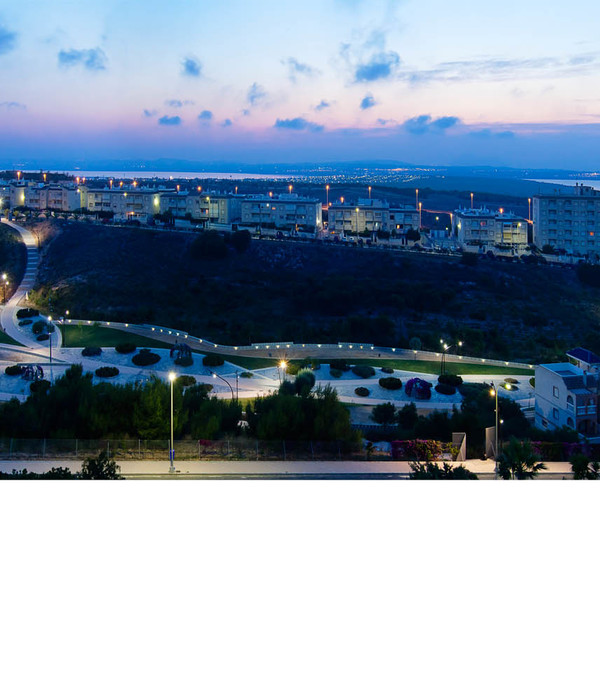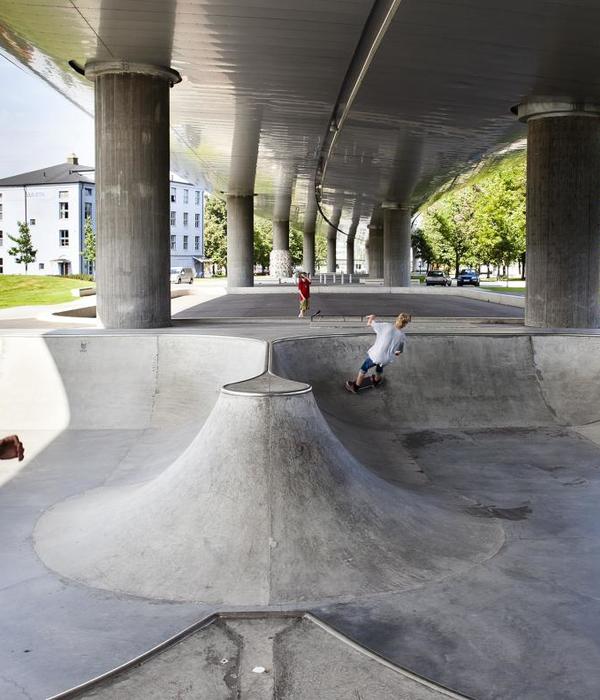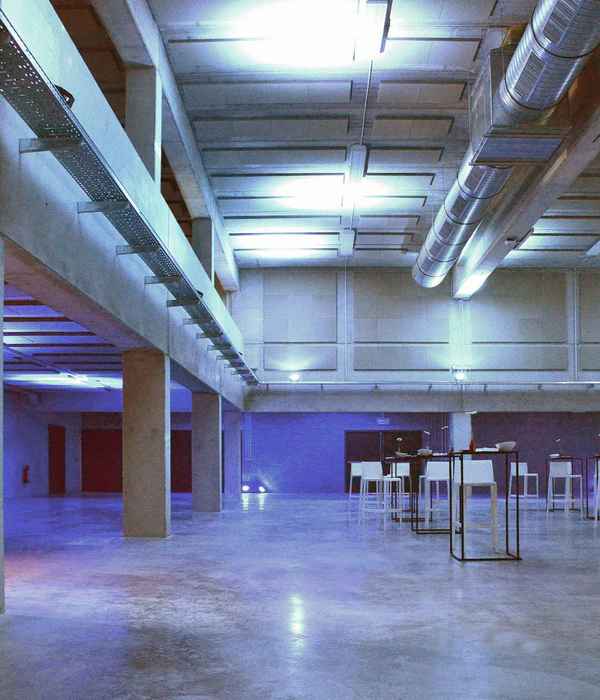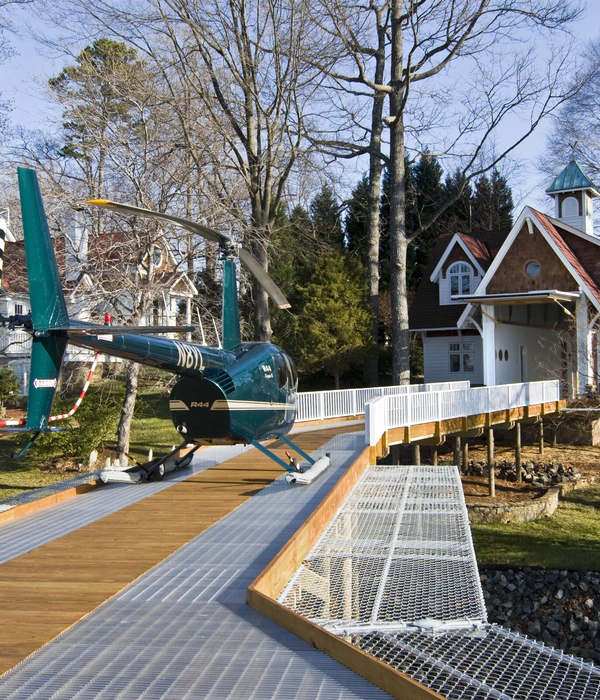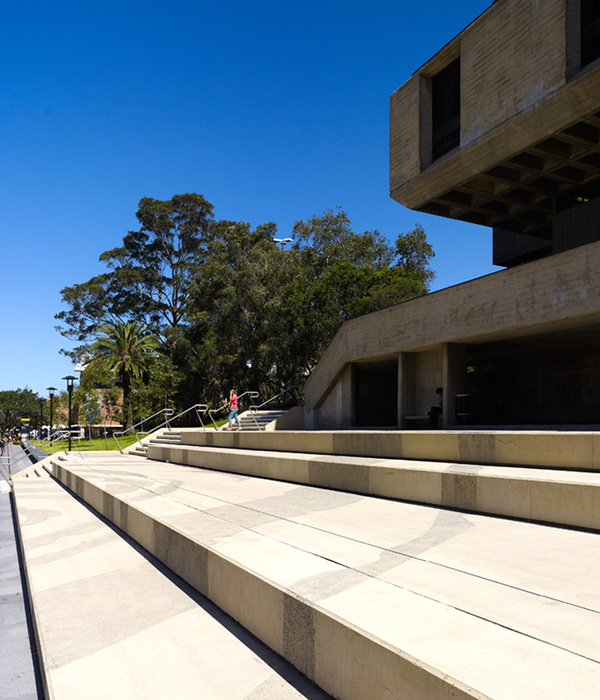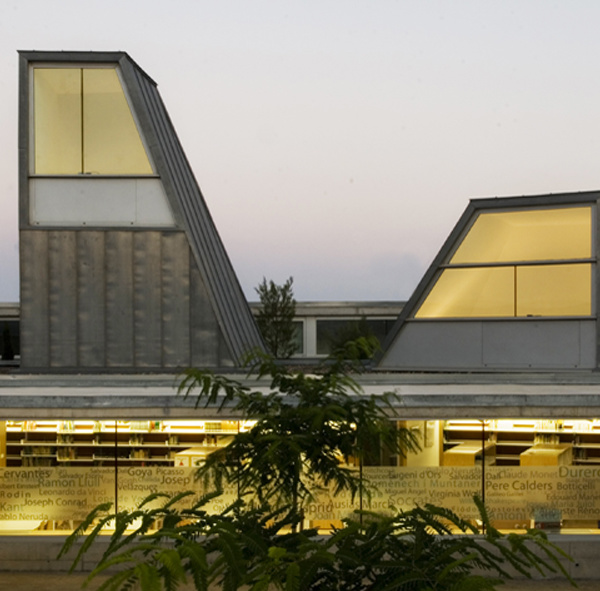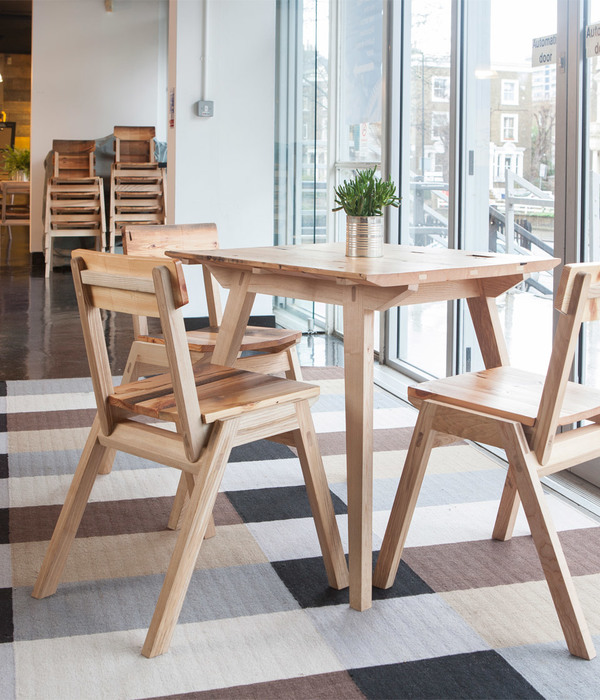新的“机械化人行步道”策略性地提倡城市互联理念,该理念被转化成大范围环形步道,将上城区与河岸及后部区域连接起来。在上城区,流线是固定的,该步道则试图穿过Miragaia区域,将Palácio de Cristal山和 Virtudes山连接起来。建筑之间引入“机械化连接”,它们作为每个节点的“城市U针”,使路线闭合。
The new “mechanised pedestrian walkways” strategically seek to encourage an idea of urban interconnectivity, translated into a circular pedestrian course on a wide scale, connecting the upper town to the riverside and back. At the upper city level the circulation is historically consolidated, seeking now to connect the Palácio de Cristal hill through Miragaia to the Virtudes hill. Architectonic pieces will draw “mechanised transpositions” and work as “urban staples” on each strategic point to close the circle.
▼步道远观,distant view of the walkways © José Campos
▼步道内部,inside view of the walkways © José Campos
▼步道顶部扶梯,top escalator of the walkways © José Campos
在Miragaia区域,山坡上的旧石阶经过精心设计,融合了三组自动扶梯。它们依附于原有的结构墙(在十九世纪晚期的地形图上有记载),该墙将自动扶梯分成不在同一轴线的三段,避免在历史肌理中造成线性“切口”。这也使得新元素更加有机和流畅,并且加强与周围环境的联系。
▼轴测图,axon © depA Architects
Thus, at Miragaia the old stone stairway on the hill was deeply worked out to include three sets of escalators. The project is widely supported by an existent structuring wall (in fact, an old wall that already can be seen in a topographic blueprint dated from late XIX century), that splits the new mechanical staircase in three non axial sections avoiding a linear “wound” on the historic fabric. This also allows a more organic and fluid inclusion of the new elements and enhances its interconnections with the surroundings.
▼新步道依附原有墙体 © José Campos the walkways are attached to the original wall
▼自动扶梯不在同一轴线 © José Campos three escalators are not on the same axis
▼石阶与自动扶梯结合 © José Campos combination of stone stairs and escalators
▼自动扶梯,escalator © José Campos
▼新旧材质对比,comparison of new and old materials © José Campos
为了平衡城市历史与环境和材质,干预与遗址及其特征形成共生和延续关系,并且没有将新元素作为干预的标志,新置入的锐利的石材以及凹凸不平的混凝土墙对此起到重要作用。阶梯保持原貌,中部平台设有花圃,点缀着长长的阶梯。
Looking to deal with the history of the city and its environment and materiality, the intervention draws a symbiosis and continuity with the existing heritage and identity, without, however, failing to assume the new elements as the marking of a new time of intervention (here, the new sharp edge stones and the bush-hammered concrete walls play a crucial role). The existent staircase was kept original, and is now tracked by flowerbeds in the mid plateaus that sprinkle the long climb up.
▼中部平台,mid plateaus © José Campos
▼花圃区域,flowerbeds area © José Campos
▼花圃细部,details of flowerbeds © José Campos
▼材质细部,details of materials © José Campos
▼扶梯细部,details of the escalator © José Campos
▼标识细部,details of signs © José Campos
▼平面图,plan © depA Architects
Architecture: depA Architects + Pablo Pita MEP: Edgar Brito, CPX , Alexandra Vicente, MSE Landscape: Hugo Carneiro Graphic Design: OKPA Studio Commission: Porto City Council Photography: José Campos
{{item.text_origin}}


